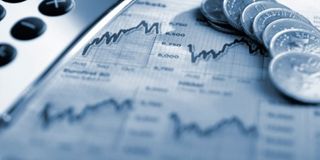Market structure and its impact on price discovery

Stock markets, or financial markets generally, may structure/organise the conduct of their trading, price discovery and liquidity via either of the three options: order-driven, call auctions, or quote-driven. The Dar es Salaam Stock Exchange (DSE) is an order-driven market. Order-driven is also divided into market-order, or limit-order. A larger portion of DSE transactions are limit-orders.
In a limit order, a thin and illiquid market imposes higher transaction costs on investors and can deter participants from placing orders. For example, in an illiquid limit order book market (also referred to as a continuous “order-driven” market), an information shock may cause a sudden surge in orders, and this might result in a wider bid (buy)-ask (sell) spread.
If no new bids and offers enter the limit order book, then the bid-ask spread that investors must pay will be much higher, and thus, becomes more expensive to trade a company’s share. This higher spread can also lead to greater price volatility. This effect contributes to price volatility. Share prices also are more volatile in a thin order book due to “market impact,” which occurs when a large buy order pushes the execution price above the best offer, or a large sell order pushes the price below the best bid. When market impact is sizable, price volatility increases.
Price discovery could also be more difficult in a thin market, this too contribute to price volatility. Consequently, a thin order book can make price discovery more difficult which, in turn, leads to less informative signals about how investors are reacting to news regarding the macroeconomy, and the financial health of a specific share listed in the market. Thus, the signals from an illiquid market are “noisier” than those generated by a deep, liquid market.
This outcome is a negative one for all parties because investors, business executives, and policymakers no longer have freely flowing information about how their actions are affecting both the macroeconomy and financial markets. Consequently, illiquidity can stymie economic growth and undermine the returns offered by shares and bonds.
Beyond the limit order book, there are two other primary ways to organize a market: (1) a periodic call auction; and (2): a quote-driven market (also known as a “dealer” market). A call auction is a periodic (as opposed to a continuous) order-driven market. Central banks normally use the call auction approach in their conduct of Treasury securities auctions. These alternative market structures help large buyers and sellers that might otherwise be reluctant to enter their orders into a quote-driven continuous market. These traders are reluctant to submit large orders because of the fear of unduly pushing prices up or down (known as “market impact”).
Another concern for these large buyers/sellers is that other traders might find out about their orders, and it might lead to trades at unfavorable prices (usually referred to as “information leakage”). With a call auction, participant’s orders are batched together for simultaneous execution at a single clearing price at a preannounced point in time. When the market is called, all buy orders equal to and greater than the clearing price are executable, as are all sell orders equal to or less than the clearing price.
Trading prices are set at values that maximize the number of shares that execute. By batching many transactions together, a call auction concentrates liquidity and, in so doing, significantly decrease transaction costs for participants. Call auctions also facilitate “quantity discovery” by allowing larger orders to be executed with less market impact and reduced information leakage. Why? For one reason: he/she can get price improvement, whereas, with exceptions, this does not happen with continuous order-driven trading.
In contrast to a call auction, in a quote-driven market, dealers (also called “market makers”) state the prices at which public customers can buy or sell. A dealer posts two-sided quotes: a bid quote at which the market maker will buy securities if a customer is looking to sell and an ask quote at which the market maker will sell securities if a customer is looking to buy.
As noted earlier, a quote-driven market is commonly referred to as a dealer market. The primary benefit of a dealer market is that it provides immediacy by allowing public buyers and sellers to interact directly and quickly with a dealer so that these public customers face less risk of not having their orders executed (referred to as “execution risk”). Thus, a quote-driven/dealer market can reduce execution risk, but this usually comes with a trade-off in terms of wider bid-ask spreads and less transparency about other buyers and sellers in the market.
In addition to order-driven continuous markets, quote-driven markets, and periodic call auctions, other mechanisms exist to meet more specialized trading needs. For example, block trading mechanism is used to handle the sizable orders of large investors who are trying to limit the adverse impact of their large orders on the prices they wind up trading at. A large order, at DSE defined as an order worth Sh200 million or more, are negotiated person to person and then executed at the market.
Given the competing structure models described above, one might ask: which one is the best to use for securities trading? Well, as in many things, the answer is “it depends” on what participants, the market and economy need. Since different type market participants (e.g., retail versus institutional) have different needs, it is not surprising that exchanges and other trading venues use multiple structure models.





